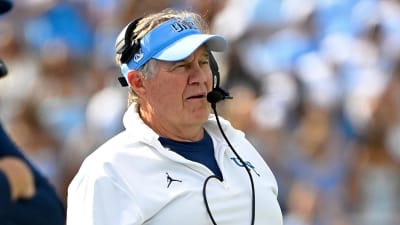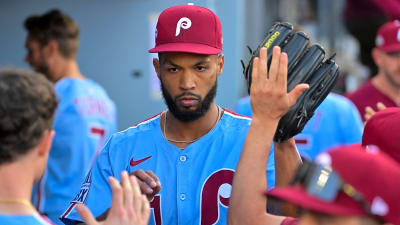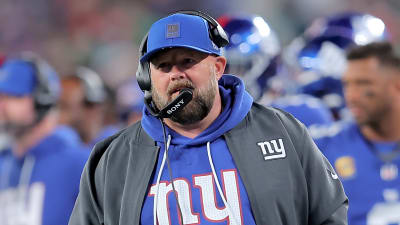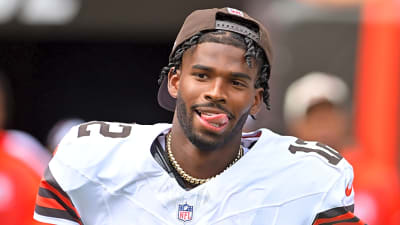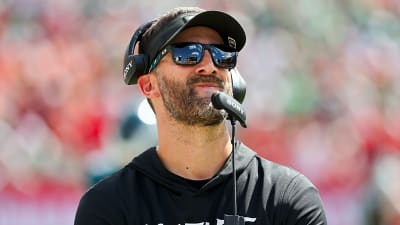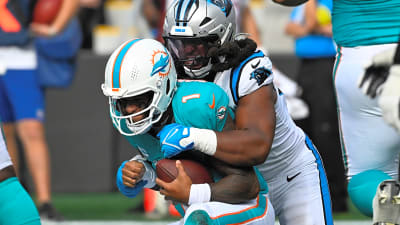
The following is a guest piece from Camden MacMillan.
Far too often, a large section of NBA media underestimates the Toronto Raptors. It happens year after year. Heading into this season, many predictions have Toronto penciled into the play-in tournament and some have them falling as far as the 12th seed. Even best case scenario predictions have Toronto competing for the 6th seed if everything broke perfectly in their favour.
The same reasons are given over and over: Toronto is slated to have the 12th-highest payroll this season, and yet the starting lineup hasn’t played a single minute together. A lack of shooting could render this team ineffective in the half court, and the starting lineup has far too many players that operate in the same areas of the court.
There’s a hyperfocus on the hypothetical negatives of this team rather than the potential positives heading into a season where the Eastern Conference is decimated with key players injured. This is the most talented roster in the Scottie Barnes era, so why can’t Toronto be the team that makes a big jump this year? Despite its two seasons under Darko Rajakovic tanking and focusing on development, there have been positive strides on both sides of the ball. The pieces are there. Can Toronto put the puzzle together?
More talent, top to bottom
Toronto is opening the season with a roster that is far deeper than last year. Yes, the Raptors acquired former All Star Brandon Ingram midway through last season. More than that though, they are heading into the season healthy, with additions from the offseason and a year of development from their young players. All factors that will contribute to an overall improved roster with the depth to insulate against injuries throughout the year. Simple health, and the addition of an All Star, should push players who were overtasked last season into much more manageable roles.
Brandon Ingram
Adding a player of Ingram’s caliber makes a huge difference for this team. There are concerns, as he has been out with an ankle injury since December of last year. However, Toronto’s medical staff has taken the time to ensure he is fully healthy heading into this year. He should fit in with Rajakovic’s system, and he has done so in preseason so far, even upping his cutting frequency for easy scores. But the system will also have to fit around him. His isolation scoring from the wing position is a skill that the Raptors haven’t had since Rajakovic took over, and it provides the offense with a new wrinkle that is much needed.
Last year, the Raptors were 30th in isolation frequency and 27th in isolation efficiency, which was partially because Rajakovic’s system emphasized ball movement over isolations. The Raptors also didn’t have any players who combined moderate frequency with even average efficiency in isolation, so they had to get creative and find other ways to score the ball.
Toronto will still focus on moving the ball and running in transition. They were sixth in passes per game last year as a team, and that should continue next season. The thing about basketball is that there are times when the offense will grind to a stop, where the ball isn’t moving and you need someone who can create a play and get a bucket. There aren’t many people in the league that are better at that than Ingram.
Sandro Mamukelashvili
I’m really excited about Mamukelashvili, probably to the point of irrationality. I’m not even certain how many minutes he will get, but from the film I’ve watched on him he just seems so damn fun. His ability to set a pick, fade to the 3, and knock it down is thrilling to watch. He also has the ability to grab defensive rebounds and put it on the floor, pushing the tempo and finding guys in transition for easy points. His offensive rebounding is nothing to sneeze at either. He fits into Toronto’s system and will even add versatility with his shooting that the team has lacked.
His interior defense is not as fundamentally sound as Jakob Poeltl’s, but he can move his feet and play help defense. If the Raptors pair him with Colin Murray-Boyles in the frontcourt, they should be able to hold their own on that end.
Collin Murray-Boyles
The Murray-Boyles draft pick is a ringing endorsement of Rajakovic and the way he wants this team to play. His defense, cutting, rebounding and playmaking will provide tons of value for the Raptors off the bench. He will fit right in and elevate the high intensity defense and fast paced transition offense that Toronto is aiming to deploy this season.
And his play in preseason has impressed beyond expectations. His defence has been profoundly impactful, even against some of the biggest players the NBA has to offer. The passing has popped, and his rapid choices and confident handle have endeared him to the system. He even hit a triple with confidence.
Injuries and Added Experience
Last season was supposed to be the first full year of this iteration of the Toronto Raptors, but injuries quickly derailed the first glimpse of the core together. Immanuel Quickley was injured in the very first game of the season and was in and out of the lineup all year, ultimately playing only 33 games. RJ Barrett and Jakob Poeltl also missed significant time throughout the season. Over the one and a half seasons that Quickley and Barrett have been with the Raptors, the foursome of Barnes, Quickley, Barrett, and Poeltl have only played 374 minutes together. That is not nearly enough time to learn each other’s tendencies, or get into any kind of rhythm. On the bright side, in those limited minutes as a group they have performed adequately:
| Minutes | NetRtg | OffRtg | DefRtg | 2pt FG% | 3pt FG% | Opp 2pt FG% | Opp 3pt FG% |
| 374 | 3.88 | 116.35 | 112.47 | 51.23% | 42.32% | 53.35% | 39.27% |
Clearer Roles, A Pecking Order, and Improved Efficiency
As mentioned above, the addition of Ingram — a true number-one option — changes so much for this team. No longer will Barnes need to have so many on-ball reps. While he can be successful with the ball in his hands, the best version of Barnes will be as an off-ball cutter, screener, and playmaker.
Similarly to when Barnes played with Pascal Siakam, Ingram will draw the best wing defender every night. Meaning Barnes will often have mismatches that he can exploit, whether it’s a smaller wing that he can post up, or a big that he can blow by on cuts and drives. His counting stats may not change much, but he will find it easier to get baskets than last year which should lead to a more refined, efficient version of Scottie Barnes.
The biggest beneficiary of the Ingram acquisition should be Quickley. In 2023 the Raptors made a big swing on Quickley, hoping that he could be their point guard of the future. That offseason, the Raptors doubled down on this move by signing him to a 5 year $175 million extension. The problem? Quickley hasn’t established himself as a lead guard who can organize the offence while finding his own way into the flow.
With Ingram, there are enough playmakers on the court that Quickley will be able to play off the ball, deploying his threat as a shooter to draw defenders away from the middle of the court. He can use that threat to attack closeouts, drawing in the defense, and finishing at the rim or kicking it out to open shooters.
Everyone will have refined roles this year, and that makes a tangible difference in what we will see from the Raptors. Everything should feel more cohesive and there will be fewer questions about who is supposed to be doing what at any given time.
Bench Mob 2.0
With the starting lineup well established, one of the questions will be: How does everyone else fit in?
Rajakovic has emphasized aggressive defense as the hallmark of this Raptors team, and the personnel on the bench largely reflects that. In Summer League this year, the Raptors forced 27.2 turnovers per game, which is a ridiculous number. With much of the bench rotation playing on that Summer League roster, explosive defense will be the primary identity of this bench unit.
There are also contract situations to consider with Gradey Dick and Ochai Agbaji both eligible to sign extensions. The Raptors will want to figure out where they fit into the team and how much they are worth. The rotation has the potential to be very deep this year, and Rajakovic will be able to make changes depending on who has it going on any given night. To start the season, I would project that the bench looks something like this:
PG: Jamal Shead
SG: Gradey Dick
SF: Ochai Agbaji
PF: Colin Murray-Boyles
C: Sandro Mamukelashvili
Then there are still Ja’Kobe Walter, Jonathan Mogbo, and Jamison Battle to consider. Walter was solid last season, but the Raptors have to figure out how Dick fits on this roster, and his shooting is a huge asset on a team deprived of spacing. Mogbo and Battle may spend additional time with the 905 this year; with a team trying to compete, minutes will come at a premium.
The bench rotation will be very fluid as the season progresses, and it’s nice to know that the Raptors have additional personnel ready to step up in case of injury. It’s a very fun, scrappy, young group that has drawn comparisons to the Bench Mob of 2017. We’ll see if they can live up to it.
Development vs. Competition
The mindset around this season is very different from last year. Even though the Raptors were fairly healthy heading into the season, there were not the same expectations. This year, there is an anticipation that this team will compete for a playoff spot. Last season the goal for the team quickly shifted to development and focusing on the draft. In particular, Barnes was afforded the opportunity to work on things that weren’t typically part of his repertoire.
At the end of October, Scottie suffered an orbital fracture and missed 11 games early in the season. Upon his return, there was a clear goal to develop his 3-point shot, as he was shooting 44 percent of his shots from beyond the arc in his first 10 games back. Compare that to his last 10 games of the season, where he only shot 23.9 percent of his shots from 3. In the latter half of the season, he was focused on developing a go-to shot, and he found it in a mid-range turnaround jumper. This is a more reasonable split for Scottie, and likely closer to where he will end up this season. Though he has depended on his pull-up jumper extensively in preseason to this point, expect his shot diet to return to more drives, more layups, more cuts, and fewer triples this season.
Importance of stretching the defense
A clear area of struggle for Toronto was year was its 3-point shooting. It wasn’t only their 3-point efficiency, but also their 3-point frequency and location. Last season, Toronto ranked 29th in overall 3-point frequency, but here’s the thing: Toronto was 14th in corner three point frequency, but 30th in above-the-break (ATB) frequency, shooting only 23.5 percent of their total shot attempts from that area (league average was 28.6 percent, with the highest teams reaching above 30 percent).
The reason this matters so much is because the ability to shoot ATB 3s— or at least the willingness to shoot them — drags defenders out from the rim and forces them to spread further out. If a team is unable or unwilling to shoot those shots, it makes a half-court possession so much easier to guard as defenders can come closer together, allowing rotations and help defense to arrive more quickly.
Players like Ingram, Quickley, and Mamukelashvili will make a huge difference in increasing that frequency and drawing defenders into more complex and vulnerable areas of the floor.
Ingram was shooting 39 percent from above the break in his limited games last year, and his ability to break defenders down and draw them into the middle of the court will allow the others to get more open looks from ATB.
Quickley’s ability to spread the floor is the primary reason why he was brought to the Raptors. Last season 41 percent of his total shots came from ATB, and he made 38 percent of them. He needs to be guarded out there, and his ability to knock them down will allow him to attack closeouts, collapse the defense and make plays from the paint. His health alone will change the geometry of the court for Toronto.
Mamukelashvili and Poeltl are polar opposites when it comes to playstyle. Poeltl plays close to the rim, setting screens and rolling hard to the basket, whereas Mamukelashvilisets screens and is far more likely to fade out to the 3-point line. This forces defenders to make a choice on guarding him or stopping the drive, as Mamukelashvili knocked down 38 percent of his ATB threes last season.
Don’t sleep on Toronto
Be warned if you doubt Toronto this year, as behind the defence in the second half of last season, they have momentum heading into the season and a chip on their shoulders. That isn’t to say they’re going to win a championship this year; they’re still far from that. But injuries to Jayson Tatum, Tyrese Haliburton, Darius Garland, Tyler Herro, Joel Embiid, and Paul George have left the Eastern Conference vulnerable. Toronto is much more talented than last season, and the additions of Ingram, Murray-Boyles, and Mamukelashvili have added depth and versatility. If Toronto can stay healthy this year, Rajakovic has developed the framework of an efficient offense, and Toronto’s defense was starting to click. It’s as good of a time as ever for a team to make a big jump, so why not Toronto?
More must-reads:
- Knicks made correct call with Jalen Brunson amid Giannis Antetokounmpo trade rumors
- LeBron James injury will snap mind-blowing trend
- The 'Most starts by an NFL quarterback' quiz
Breaking News
Trending News
Customize Your Newsletter
 +
+
Get the latest news and rumors, customized to your favorite sports and teams. Emailed daily. Always free!
